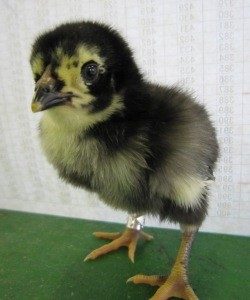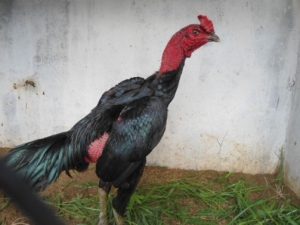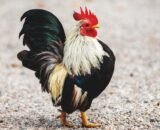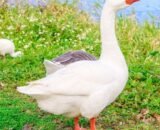- You have no items in your shopping cart
- Subtotal: $0.00
Shamo Chickens For Sale
The rooster breed “Shamo fighter” is a very strong and dominating specimen, possibly the most “powerful” rooster that is always on top of his opponent. Of a size that goes from medium to large, having a weight that varies from 3.5 to 6 kilos, depending on the line. The color of their plumage can be white, shamo chickens, red, and yellow (turn), or gold.
There are several lines or breeds of shame roosters, but generally, they all have thick feathers, of Asian origin. This breed was developed to be a fighting rooster of unmatched ferocity and courage.
Shamo Overview
Breed History
The Shamo is a tall and athletic Asian Game Bird Breed. It is one of the seven breeds of Shamo chicken originating from Thailand, but widely kept and intensively bred for strength and endurance in Japan from around the early 1600s Japanese “Edo” period. Although interestingly artwork from the earlier Japanese ‘Heian Period’ of 794 to 1185 depicts chickens similar to Shamos. All seven breeds of Shamo chicken are National Monuments in Japan and very much seen as a strong part of the national heritage of Japan. There are two groups and 15 breeds of chicken protected by Japanese National Monument legal status of 1941, o-shamo chickens, with the aim of avoiding extinction of these historic birds.
The Shamo cockerel is a large, strong, muscular bird bred with a bold fighting spirit specifically for cockfighting, which is still legal in Japan and other Asian countries. There was a Japanese custom to eat the Shamo that lost the fight and Shamo meat is still considered a national delicacy in recipes such as military chicken or shamo pot. In the 19th Century Shamo meat was part of the diet of Sumo wrestlers, in the belief it would make wrestlers more aggressive and likely to win.
The name “Shamo“(sometimes used as a general designation for gamebirds in Japan) is believed to be a Japanese corruption of the word “Siam”. The Kingdom of Siam was the original name for the country now known as Thailand, from where Malay/Asil/Aseel type chickens were sent to Japan for breeding purposes. Pure Shamo males were widely bred in Japan with other local chickens to produce “chamootosi” chickens with a large body and hence large quantities of meat for the table.
American Poultry Association introduction
Shamo chickens were introduced into the USA at the end WW2, shamo chickens, some allegedly as eggs pocketed by GIs and taken home for hatching. It was only in 1981 that The American Poultry Association recognized the Shamo as a breed.
Weight
Breed standards state that mature hens will typically weigh between 6.6 pounds (3 kg) for a middle weight and 10.5 pounds(4.8 kg) for a large Shamo. Mature hens can be up to 25 inches (63 cms) tall. Male roosters should weigh 9 pounds (4.1 kg) for a middle weight and up to 12.3 pounds (5.6 kg) for a large Shamo, and be over 32 inches tall (81 cms).
Would a shamo be right for me?
Shamo chickens are mostly kept by backyard chicken enthusiasts for egg production and their striking appearance, shamo chickens, namely the birds vertical posture, strutting walk, bold attitude and unique looks. It is worth noting that Shamo are only considered to be poor to fair egg layers.
In the UK & USA it can be quite challenging to find pure bred Shamo chickens for sale, as there are so many cross breeds.
Eggs
Size
Eggs are large in size.
Color
Eggs are usually light brown or white, sometimes with speckles
Production per year
Up to 80 eggs per year
When do they start laying eggs?
From 5 months

Shamo Characteristics
Temperament / Are they good as pets?
The Shamo cockerel can quickly develop a territorial nature as a chick and their aggression can lead to fights to the death with other male chicks. For this reason they are separated at hatching and it is not recommended to keep more than one male bird in a coop or run.
Shamo hens are considered to be good mothers and generally get along quite well together. One cockerel for around 5 hens is a good ratio. The Shamo is a wiry, shamo chickens, lean and muscular bird. Often they are described as cheeky and confident and noted for their large muscley thighs. Given enough space to roam and not too closely confined the Shamo will do well in your backyard.
The Shamo has sparse plumage, therefore lacking good heat insulating feathers or protection from rain and damp. They can however tolerate fairly cold conditions for short lengths of time, when properly housed and fed.

How do I tame “Shamo” chickens?
The best way to tame a chicken is to handle it when it is still young; this gets your chickens used to people. If you have older chickens that need taming, try feeding them out of your hand regularly. Shamo can become very tame and as a confident bird will often just stand and watch humans with interest. Shamo cockerels have been known to attack cats, dogs and other small animals if they have not been raised with them and feel threatened.
How many do I need to buy?
2 female chickens are the absolute minimum you need for a flock, we recommend around 5 as a small flock number.
Shamo roosters can be very tame and well behaved with humans if hand raised as chicks, but aggressive to other male birds. These birds are not great flyers and high protective fencing is only necessary to keep predators at bay.
How much space do they need?
These are large birds and don’t like being confined in small chicken coops, so ideally 8 square feet minimum per mature bird in a coop. In a run around 30 square feet minimum per bird, with good outside access to prevent boredom. Shamo love being outside exploring and foraging for food. Luckily Shamo don’t fly much, unless in danger, so high -level containment fencing above 5 feet (150 cms) is not necessary. Some breeders have described Shamo as being large and clumsy, because they lack plumage protection and can break eggs when sitting.
Will they mix with my other chickens?
In general Shamo will get along well with other breeds of chickens, as long as there is no other male cockerel to cause aggressive behaviour. Shamo and other breeds will usually get along fine, as long as they are not too closely confined and there is adequate room to explore and prevent boredom.
Appearance
Plumage is quite sparse on the whole body, with short, hard feathers which can vary greatly in color from black, brown, red, blue/green, gray, ginger to white, with a small ‘prawn/shrimp shaped’ tail. The flesh is an unusual red color and this will be on view around the keel area. Plumage here is very sparse or non-existent and also sometimes on the chest and neck.
The Shamo has well developed thigh muscles and must have an upright neck to meet breed standards. Females can also vary significantly in color from white to an attractive wheaten colour. Shamos can also have feathers with a slight ginger shade. Spangled birds with white tips on the feathers are highly sought after for showing. The wings are short and the bird has strong prominent shoulders.
Classic Shamo proportions are supposed to be one third of height for legs, one third for main body core and one third for neck/head.
The Shamo has a chrysanthemum combe, prominent brow ridge (beetle brow), a good broad head, short curved yellow beak, the iris is white or yellow and the wattle is small or completely absent. Feet are usually yellow.
Feeding
What should I feed them?
When you first get your chickens home you should feed them growers mash. As it has a higher percentage of protein (19%) and is refined so that it can be easily ingested. You should feed them growers mash up until 6 weeks.
They should then be fed chicken pellets which is just feed in pellet form. This has between 15-16% protein.
At 18 weeks your chickens need more nutrients to help with egg production. So slowly start feeding them layers mash or pellets which has around 16% protein.
Chickens will need access to fresh drinking water all day long, they will prefer cool drinking water, no one is quite sure why maybe it’s a prehistoric throwback. As Shamo are small birds it is important to have the feed and water at the proper height for all birds in the pen. Ideally feed and water should be at back level.
If the water is too low down, the Shamo may scratch litter into it. This will make water will go bad quickly. Your chickens also need grit to help with egg production. Make sure there is always some within easy access for them at all times.
How much should I feed them?
Shamo are very large birds and will eat anywhere between 5 oz (140g) and 7 oz (200g) a day. On average breeders feed their chickens 6 oz (170g) a day. Start by feeding them this and then adjust the weight of feed around how much they consume. You can leave the feed in a feeder for them to eat whenever they please. Or you can give them set meal times. Shamo love to forage outside for grubs and bugs.
Your chickens also need grit to help with egg production. So make sure there is always some in easy reach for them at all times.
What can’t they eat?
Chocolate and beans are the two main foods that shouldn’t be eaten by chickens. The phytohemagglutinin in beans can lead to fatalities and the theobromine in chocolate can cause heart problems. Moldy food that has bad bacteria in it should not be fed to chickens as it can make them very unwell. For this reason, shamo chickens for sale near me it is illegal to feed your chickens leftovers in the UK.
What do I need to keep chickens?
The most essential item you need to keep chickens is a coop! Your coop should ideally be 0.8 m2 or 8 square feet per chicken. Their run needs 30 square feet (2.7 m2 ) per chicken. In the coop they should have a perch to sleep on and a wooden laying box for their eggs.
You should invest in a sunken fence to go over and around the coop to keep them safe at night. Find a water bowl which they can’t stand in or push over. Place it in the shade too, so the water doesn’t get too warm. Feed and water for Shamo are best placed off the ground. Do this at around the ‘back’ height of the bird. Raised feed and water bowl holders are easily obtained.
| Available | Trio, Pairs, Stags, Pullets |
|---|







Customer reviews
Reviews
There are no reviews yet.
Write a customer review